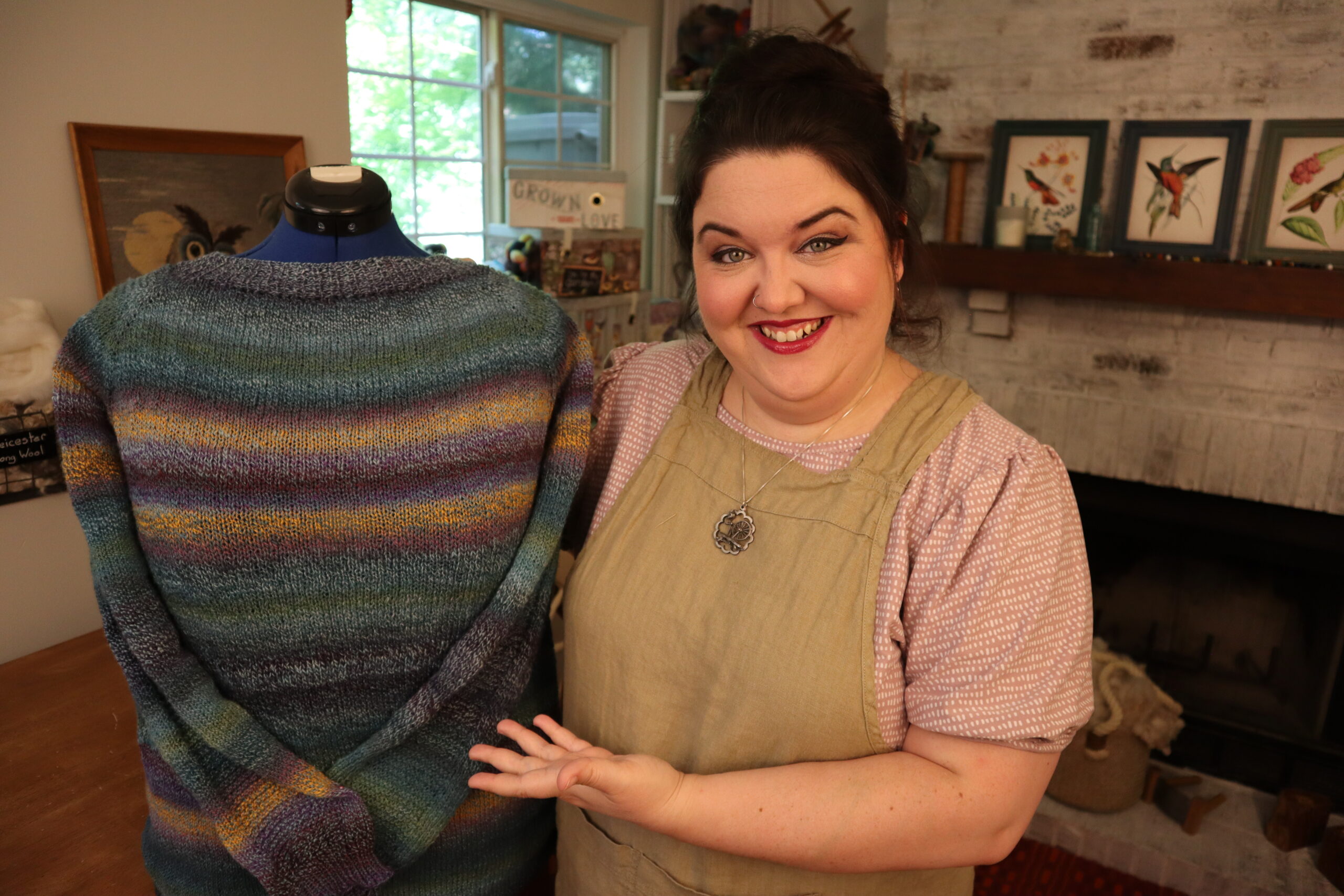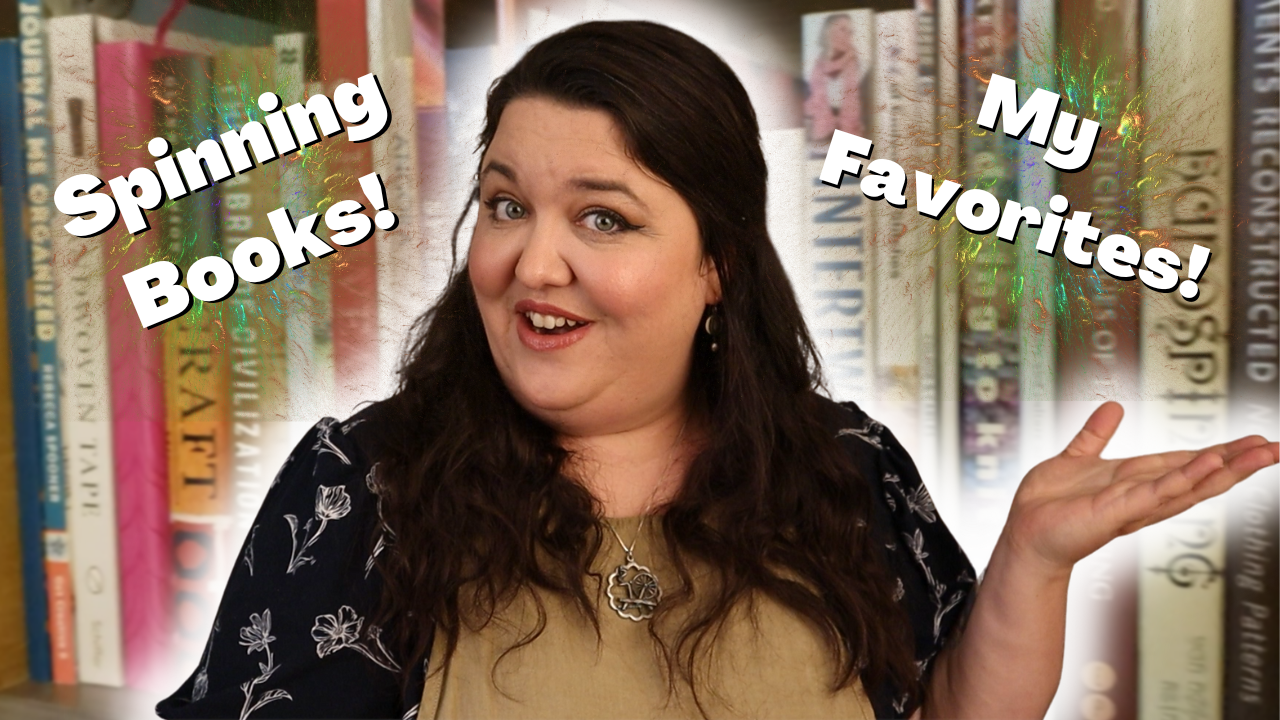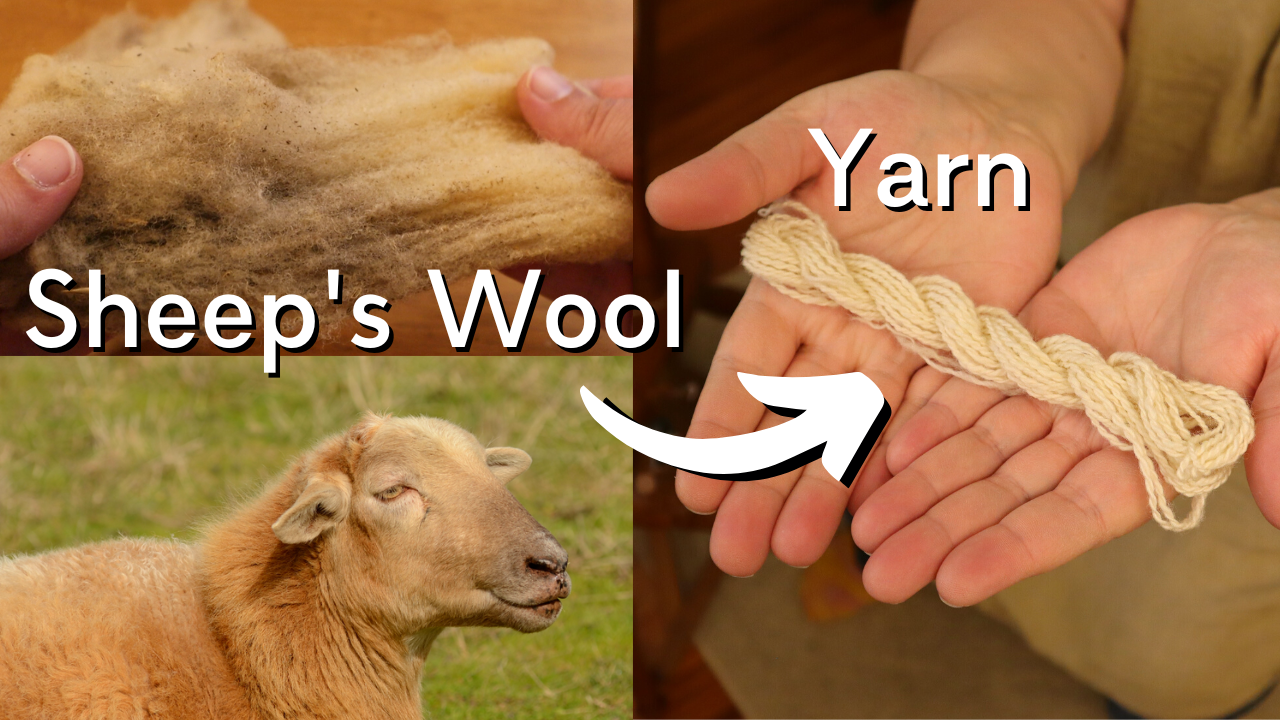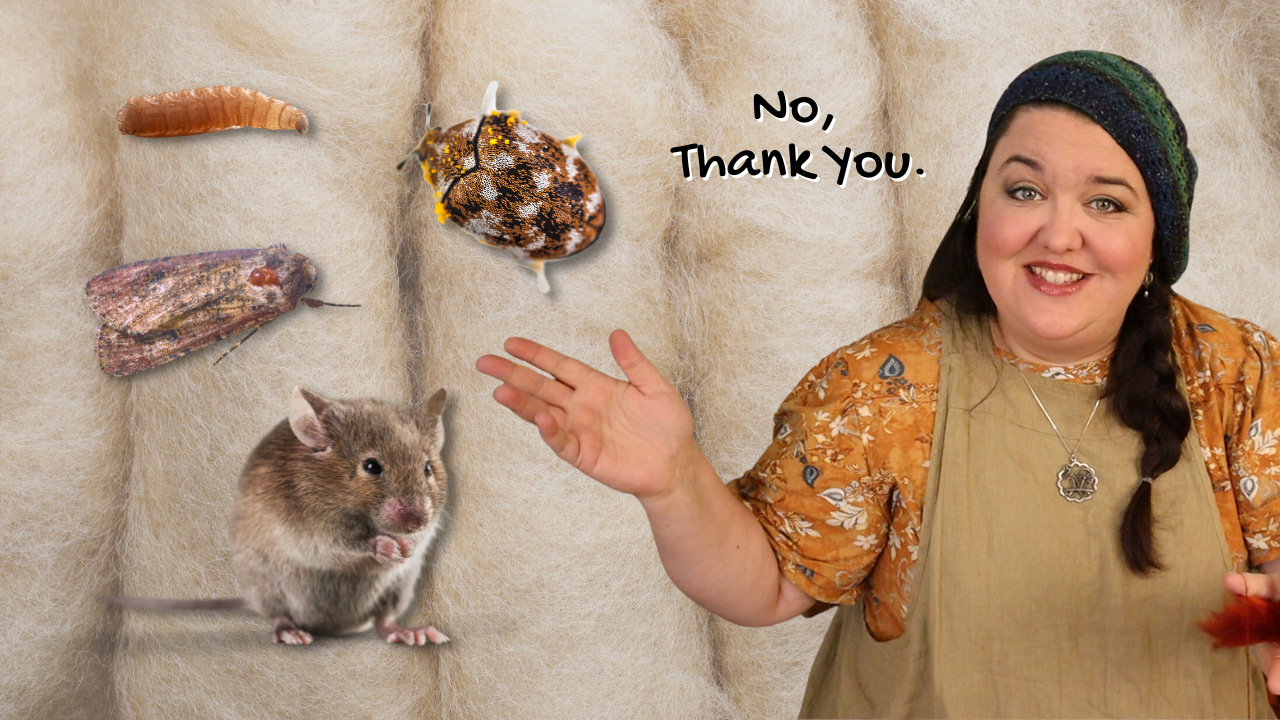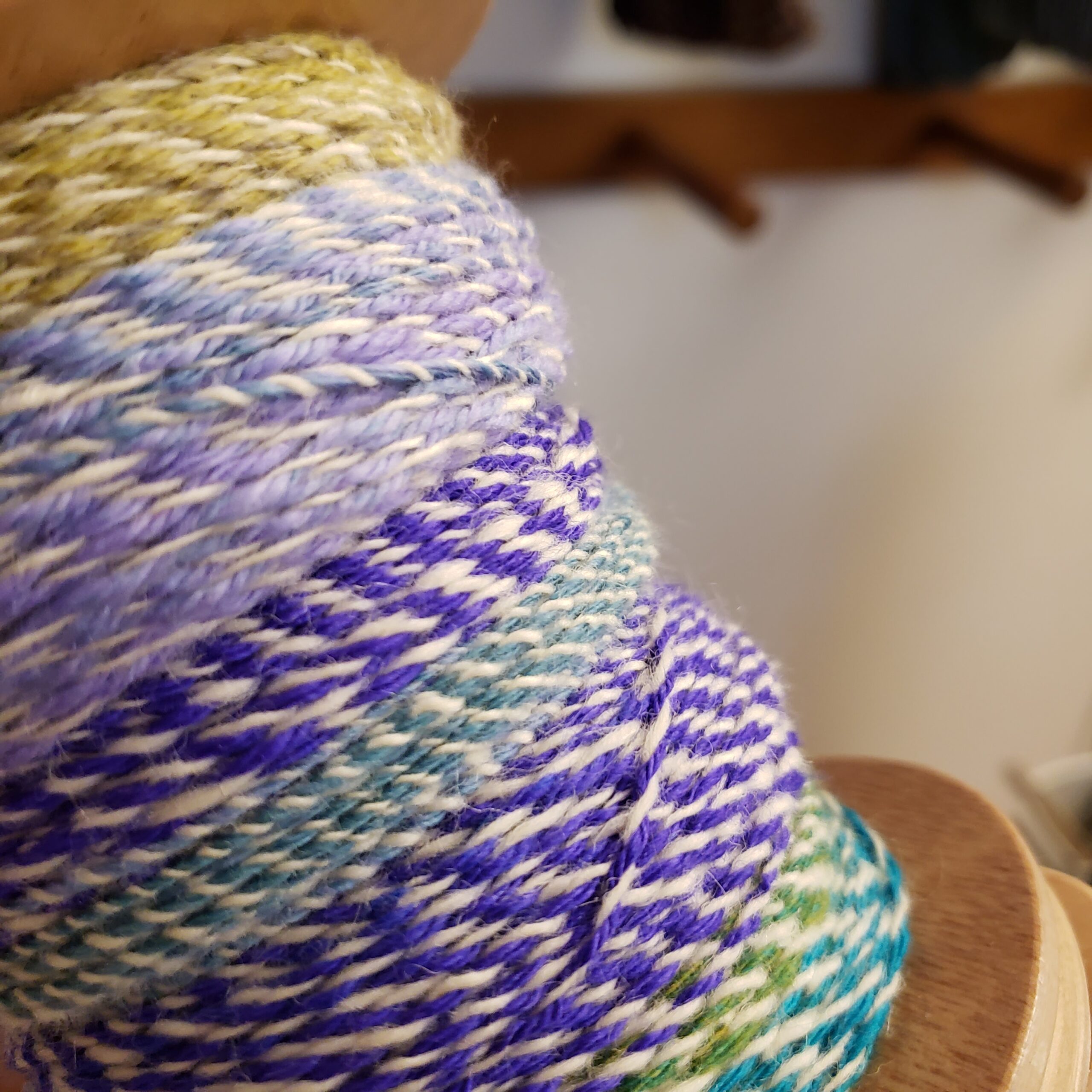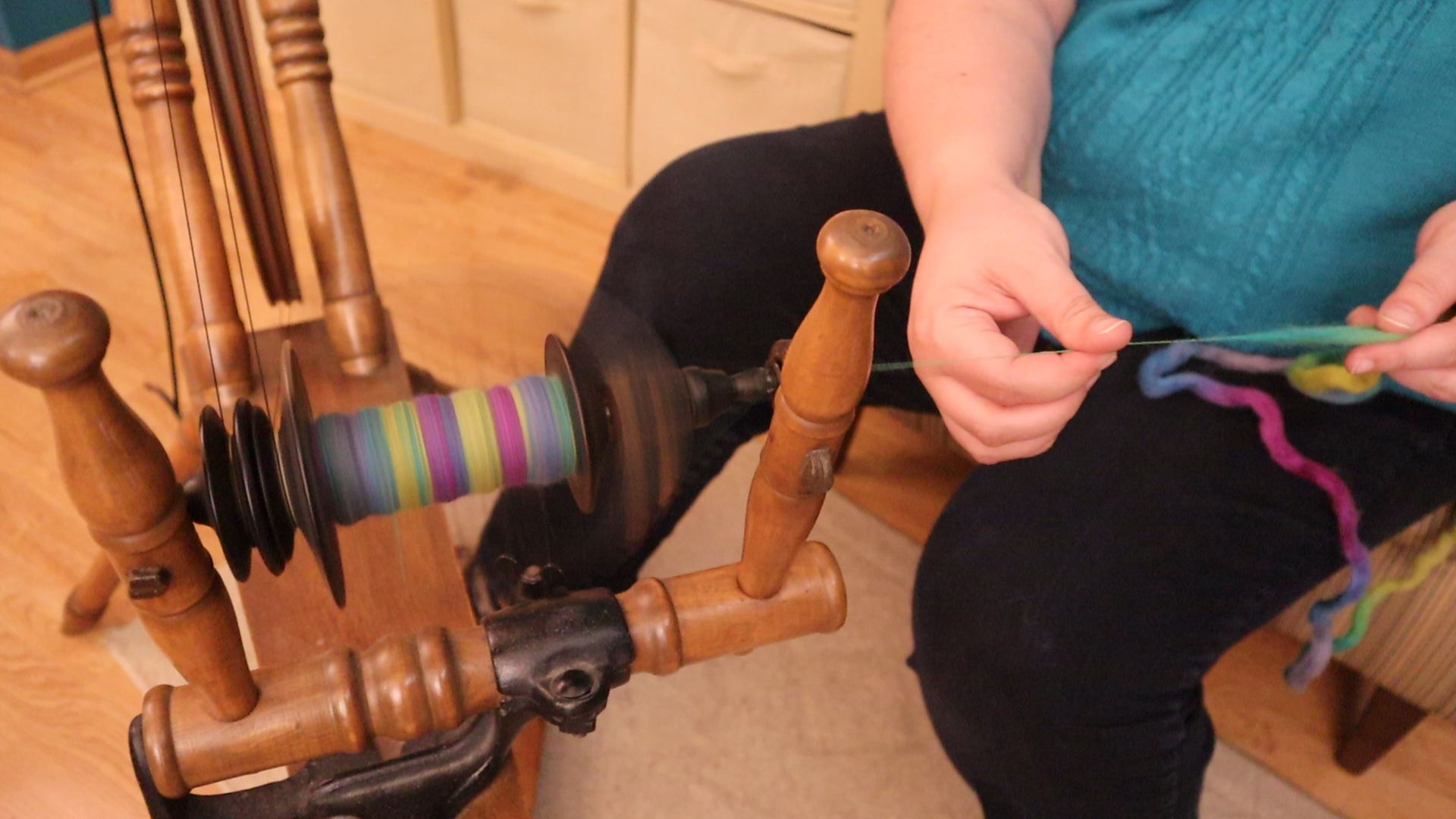I am so excited to finally share this project—a fully handspun, handknit sweater! This project took me a full year to complete—from spinning the yarn to knitting the sweater.
Fiber Friends, don’t be fooled by the short blog post. This project took me many many many hours to complete. I did my best to clearly but quickly explain the whole process in this post and on YouTube—from planning to spinning and finally to knitting. I also give some tips for planning a large knitting project and keeping your colors organized.Read More
Tag: spinning yarn
Spinning
5 Spinning Books I Will Always Have on my Shelf
A big resource in my spinning journey has been my spinning library. I have bookshelves with piles of books about spinning, and I was thinking—heaven forbid this should ever happen—If I were to wake up and my bookshelf had magically disappeared, what books would I immediately run out and replace?
So, I’ve curated a list of five (plus one) spinning books that I can't live without because they are essential, and I still use them to this day.Read More
Spinning-
Spinning History-
Wool-
Yarn
From Fleece to Fabric — An American Tunis Breed Study
Just as there are many dog breeds that come in different sizes, colors, and coat types — there is a wide variety of sheep breeds. Each sheep breed has been bred throughout history to produce wools with different characteristics.
So how do you choose the right breed for your project? Breed studies can be immensely helpful for understanding this.
I generously received a gifted sample of some American Tunis wool. So, I am going to walk through a miniature breed study, from raw wool to finished yarn, with American Tunis.Read More
Spinning-
Spinning Wheels-
Wool
Choose Your Tools – How to Start Spinning Wool for Beginners
As you might have noticed, I talk about all things spinning (products, fibers, techniques, you name it!) on my blog and YouTube channel. With all this information out there, it can seem intimidating to get started spinning.
So, people often ask me how to get started if you are a beginner. Getting started doesn’t have to be that complicated or scary. That’s why I want to give you a very bare-bones breakdown of the basic things that you need to get started spinning.
I am going to share all my tips for getting started spinning, plus I'm really excited to partner with SkillShare, the sponsor for this post, to help you elevate your spinning education.Read More
Evie Gets Dressed-
Intentional Wardrobe-
Spinning-
Yarn
How to Prevent Wool Moths and Other Pests from Getting in Spinning Fibers and Hand Knits
I have a lot of wool in my home, including things like my spinning fibers, rugs, and hand knits. With all that wool, it is important that I store it properly to avoid any pest problems.
It can be kind of gross or scary to talk about (I truly hate moths!), but pests are a real risk.
So, let's walk through the different possible kinds of pests to watch out for, how to store your fibers and wool to prevent any pest problems, and how to deal with them if you do get an infestation.Read More
Spinning-
Yarn
8-Ply Handspun Yarn — A Cabled Crepe Adventure
While I love spinning large batches of consistent yarn for specific projects, I also really love pushing my skills and trying different yarn constructions and textures. So, for this project, I wanted to experiment with creating a fun, structured, and technical yarn.
I started this project by creating a chain ply, which became a crepe yarn, then a cable ply, and finally it ended up as an 8-ply handspun yarn made from a merino and yak blend. It was quite a journey, so let's get spinning!Read More
Spinning-
Yarn
Should I Let My Bobbins Rest Before I Ply My Yarn?
Should I let my bobbins rest before plying my yarn? This is one of the most commonly asked questions in the spinning community! Some people swear by it, and others prefer to just charge ahead on their project.
Personally, I tend to go right ahead and ply my yarn without waiting. But I was really curious to see what difference letting the bobbins rest has on the final yarn. And I wondered about questions like: How do we know how much twist the ply needs if the energy is rested out of it? Does it make tangled yarn less likely?
Let's find out!Read More
Spinning-
Spinning History-
Spinning Wheels-
Wool
Canadian Production Wheel (CPW) — History, Spinning, and Long Draw
Have you ever wondered about the history of Canadian Production Wheels (CPWs)? Why were so many produced in Quebec during the late 1800s and early 1900s? I was inspired to do some research on CPWs after acquiring one myself.
The CPW is a beautiful historical spinning wheel and a real workhorse. I like to compare it to a draft horse and adoringly call my wheel Philippe after the draft horse in Beauty and the Beast.
Keep reading to learn all about the history, key features, and how to spin on a CPW.Read More
Intentional Wardrobe-
Knitting-
Spinning-
Wool
Handspun Yarn for a Knitting Project and an Interview with Aroha Knits
When I saw photos of the cowl, I just knew it was a special piece. The Whiria Cowl was designed by the amazing Francoise, who is also the creator of Aroha Knits. I knew that I needed to dig deeper into the story behind this project, so I invited Francoise to chat with me about what this cowl means to her. Then I spun a specific yarn to knit this beautiful cowl.Read More
Spinning-
Spinning Wheels-
Tutorial-
Wool-
Yarn
Does plying from a center pull ball change your twist? — A yarn spinning experiment!
<!-- wp:paragraph -->
<p>Many fiber friends (myself included!) often ply their yarn with a center pull ball. This popular method works especially well if you only have one bobbin.</p>
<!-- /wp:paragraph -->
<!-- wp:paragraph -->
<p>You form your yarn into a center pull ball with a yarn winder, then take the end of your yarn from the inside and the end from the outside and give it twist. This creates a two-ply yarn. I've used this center pull ball plying technique a lot in my projects.</p>
<!-- /wp:paragraph -->
<!-- wp:paragraph -->
<p>But sometimes you'll hear people say, "Don't do that! It will mess up your twist!"</p>
<!-- /wp:paragraph -->Read More
